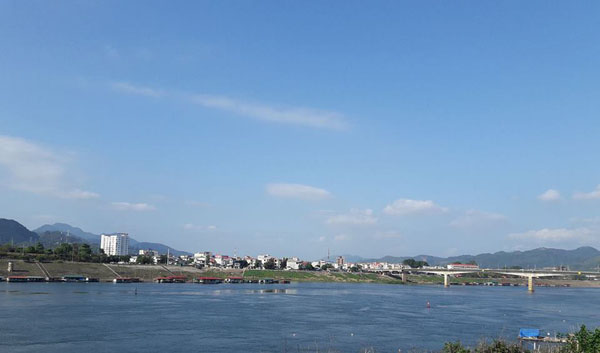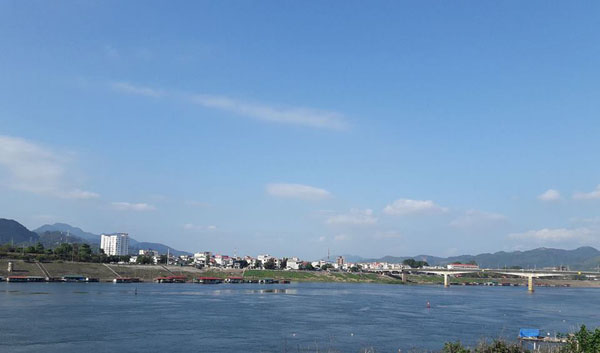



Photo: The section of the Da River that
flows through Hoa Binh city
Each person in Hoa Binh city has his/her own feelings about Da River depending
on their memories about the river. To the best of my childhood recollection, Da
River was so big, fierce and immense when the dam of the hydropower plant was
yet to be built connecting the two river banks.
Through the flow of history and culture, the river’s stature has grown as has
its place in locals’ love. The river was once associated with the Doc Ngu
uprising when the insurgent troops used to cross the river in boats to fight
against French colonialists in the 19th century. It was also the place where
local army and militia forced set on fire the French colonialists’ warships
during the nine-year resistance war. The Hoa Binh hydropower plant, the biggest
of its kind in
The Da River in general and its section flowing through Hoa Binh city in
particular has become a source of inspiration for many poems, music works,
paintings and photos. The "Da River”, a collection of essays by writer Nguyen
Tuan, has touched the soul of many people due to the river’s magnificent,
fierce and romantic beauty. Late poet Quang Dung composed a poem on Da River in
1952. A friend of mine posted a picture of Da River in the flood season on
Facebook, which captured the image of people flocking to the river to collect
floating wood. This is an old but familiar image of the locals’ daily life.
Another friend of mine, who was born in Hoa Binh city and now lives in a
southern city, uses a photo featuring a floating bridge across the Da river
years ago as his avatar on Facebook. He once told me that only when he leaved
Hoa Binh city, did he recognise that the city has a "special privilege” which
is the Da river. That is the reason why every time he is about to leave the
home city for the south, he asks his friends to go to a coffee shop on the
river bank to watch the river at night. He said: "I have stood besides Seine
river in
On the right bank, since the street along the dyke was built, the life of households
along the river in Phuong Lam and Dong Tien wards has changed, more bustling
and ...more market-oriented. Although the road is yet to have an official name,
almost all locals hope that the road is included into management agencies’
planning to develop tourism sustainably. As a result, not only Hoa Binh
residents but also visitors to the city want to come to the area and watch the
beauty of the river and enjoy the landscape and culture of Hoa Binh and the Da
river.
Regardless of whether it will be named as a food street, a walking street,
flower street, light street or after a famous person, the road along the Da
river still makes its own imprint in the mind of local residents and visitors.
Coming to the river at night, visitors can see the sparkling Uncle Ho’s statue
on the Tuong mount, the imposing hydropower plant and the peaceful Hoa Binh
pagoda.
Bui Huy